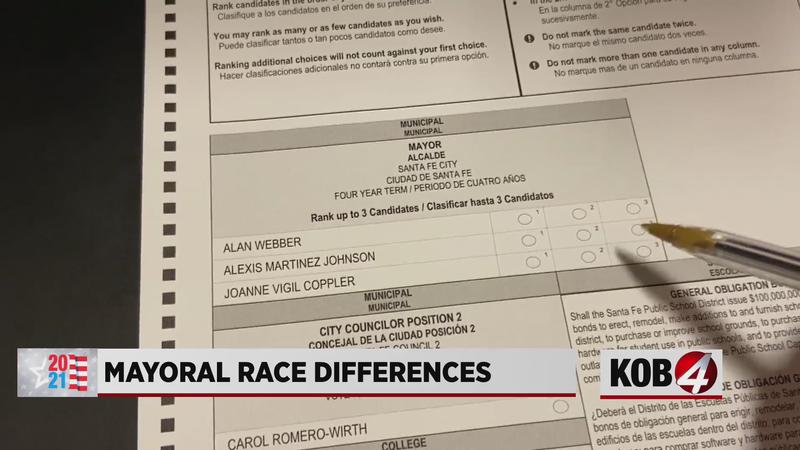What is ranked-choice voting? Here’s how it works in New Mexico
[anvplayer video=”5067777″ station=”998127″]
SANTA FE, N.M. — Ranked-choice voting is used in both Santa Fe and Las Cruces. It serves as an "instant runoff," guaranteeing that the winner gets a majority.
Voters can select a ranked order for every candidate. Ballots are run for a first round, and the lowest vote-getter is eliminated. The second choice votes for the eliminated candidate’s ballots are then added to the other candidates and the total is run again until there is a winner.
Both Las Cruces and Santa Fe went multiple rounds to get a mayoral winner the first time they used it in a mayoral race. This year, it’s been a tough campaign, but maybe not brutal.
"So, one of the hopes around ranked-choice voting is that when you are running a ranked-choice voting race as a candidate, you have to be nice to your opponents because you want the supporters of the other side to vote for you second or third," said Katharine Clark, Santa Fe County clerk.
One of the other byproducts is that election results may take longer. The clerk needs the vast majority of ballots to be in before they start releasing returns, because they want to make sure they are tracking second-place votes and not showing a candidate in the lead who might lose that margin.
